Learn about Martin Luther King!
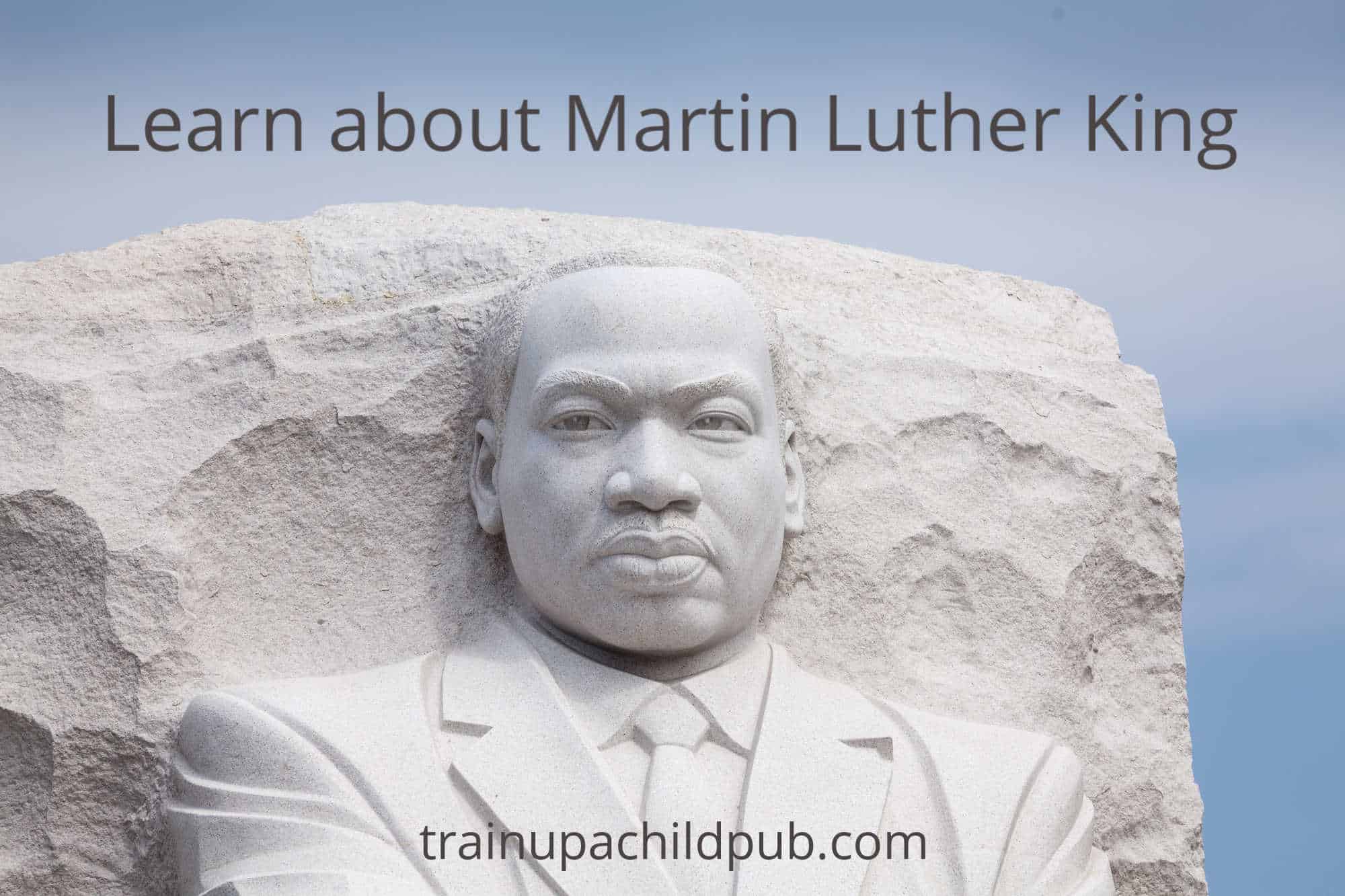
Dr. King wasn’t just a brilliant man, he was a hero of our time. So how have you helped your kids learn about Martin Luther King, Jr.?
Whether you’re looking for activities for Martin Luther King Day, or want your kids to learn about Dr. King and his role in the Civil Rights Movement… resources and assignment ideas follow.
Note: This post contains affiliate links from books we have read and loved. If you buy a book from our links, we will receive a few cents at no extra cost to you.
“The function of education is to teach one to think intensively and to think critically. Intelligence plus character – that is the goal of true education.” –Martin Luther King, Jr.
“Injustice anywhere is a threat to justice everywhere.” –Martin Luther King, from a Letter from a Birmingham Jail, April 16, 1963
Learn about Martin Luther King with these resources
If you haven’t yet taught your children about Martin Luther King, Jr. and the Civil Rights Movement, here are some ideas for you.
Whether you’re looking for a few things to do in honor of Martin Luther King day or want to learn more about Martin Luther King as part of a mini-unit on the Civil Rights Movement, here are some resources and assignments to help for elementary through high school.
1. Before you begin, you might have your (upper elementary on up) children do a little reading and research on their own about the Civil Rights Movement in the United States. While they’re reading, have them take a few notes describing what happened, as well as the outcome of the Movement.
Afterward, you might open the discussion by making a list of what everyone knows so far. (You can even make a big butcher paper chart with three columns: “Know” (what they know so far). “W” (What they want to learn). And “L” (what they learned by the end of your discussion or mini-unit).
(Alternatively, if your children already have some familiarity with Dr. Martin Luther King, you could begin with the KWL chart.)
2. The Civil Rights Movement under Dr. King’s leadership was characterized by non-violence and passive resistance. Begin by defining those terms. Then talk about the contrast between that behavior and the violence of those trying to keep the races apart by segregation. Here’s an article that will help. This is better for middle school and high school. (You can also contrast Dr. King’s non-violence and passive resistance to more violent race-related events during more recent times.)
3. Here’s a page linking to Dr. King’s “I Have a Dream” speech. And in case you have a student that has difficulty with auditory learning, the speech is in writing on this page as well.
After listening to or reading the clip from Dr. King’s “I Have a Dream” speech, have your students draw a picture of one of their “dreams.” (Think about and draw how they would like the world to be.)
4. Read and discuss the transcription of “Letter from a Birmingham Jail.” (older students)
5. Instead of reading the entire letter, for younger students, read just a section of the letter and have your children narrate afterward. (elementary students on up) You might consider using the quote in the purple graphic below for this narration.
6. You can also have your elementary children do copy work over a few lines up to a paragraph of the letter. You could use the quote near the top of the page, for example. Discuss it first, then have your child copy it.
Also, there are several other edifying quotes you could choose from in this letter, such as the one shown in the graphic below. Talking about a quote first helps your student grapple with the ideas presented while she is copying it.
6. “The Letter from a Birmingham Jail” is an incredibly well-written letter. It’s an amazing letter because of the ideas that are expressed and because of the way they’re expressed. Because of the vocabulary and the length of the letter, it’s more appropriate for an older student. Have your late middle/high school student(s) read the letter and discuss or write about one or more of the following:
- Based on his letter, what can you tell about Martin Luther King’s education?
- Based on his letter, what can you tell about his values?
- Research the Supreme Court case Brown vs. Board of Education. What was this legislation about and what was the outcome of the trial?
- During this tragic time in American history, Black Americans left the South in droves for the North and West. Read about the Great Migration to Chicago and examine these primary documents. (Discussion questions are included.)
Learn about Dr. King with these additional assignment possibilities
7. Make a lapbook about Martin Luther King’s life. This is perfect for elementary through middle school students. A lapbook also works great for a high school student, especially if you have a student that enjoys hands-on, crafty projects or is a reluctant writer.
8. Assign all or some of these topics to your middle and high school kids. Give them time to research, and then have them each report briefly on each event or person during your Martin Luther King study:
-
-
-
-
-
-
-
-
-
-
- the 1963 March on Washington
- the Southern Christian Leadership Conference
- the Selma Voter-Registration Drive
- the Voting Rights Act of 1965
- the Birmingham Protests of 1963
- the Black Panthers
- Eugene “Bull” O’Connor
- Coretta Scott King
- Mahatma Gandhi
How to process what you learned about Dr. King with your kids
After your students read and learned more about Dr. Martin Luther King, ask them:
- Why do you think we celebrate Dr. King’s birthday?
- What did he do that was important?
- What could you do to help bring peace to the world? (Starting with your home or neighborhood…)
- What does the Bible say about the importance of being a peacemaker?
- Again, especially if you’re discussing Civil Rights with children of various ages, be ready to address the topic of violence. And the contrasting use of non-violence during the Civil Rights Movement. I wouldn’t get too detailed about this for the younger set!
But for the older, discuss this more freely.
Books about the Civil Rights Movement
Books for older students about the Civil Rights Movement
Note that To Kill a Mockingbird is a novel written before the Civil Rights Movement. (Although it painfully depicts the need for the Civil Rights Movement!) In fact, it’s one of the books we use for our high school American Literature course for high school students.
So, what will you be learning on Martin Luther King Day?
Do you have any books you especially like about Dr. Martin Luther King, Jr. or the Civil Rights Movement? If so, I’d love to hear about them in the comments!

-
-
-
-
-
-
-
-
-
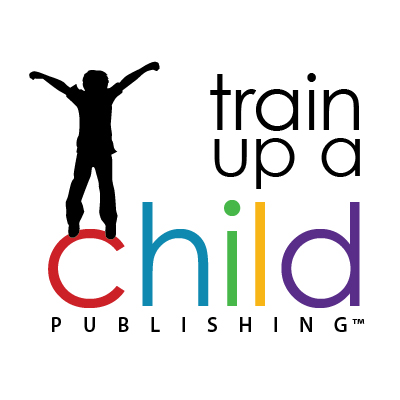
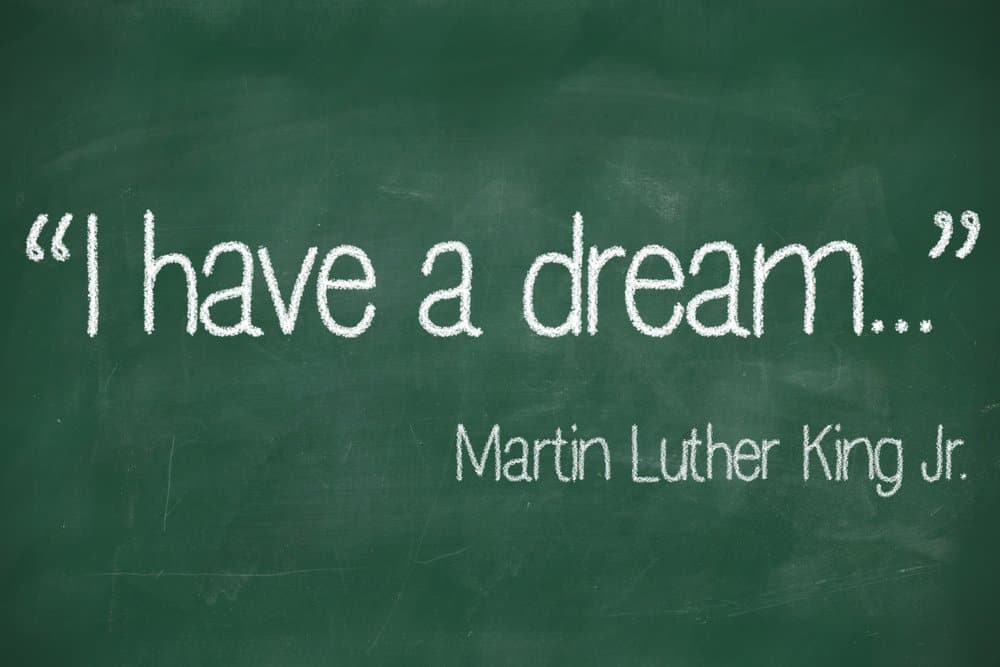
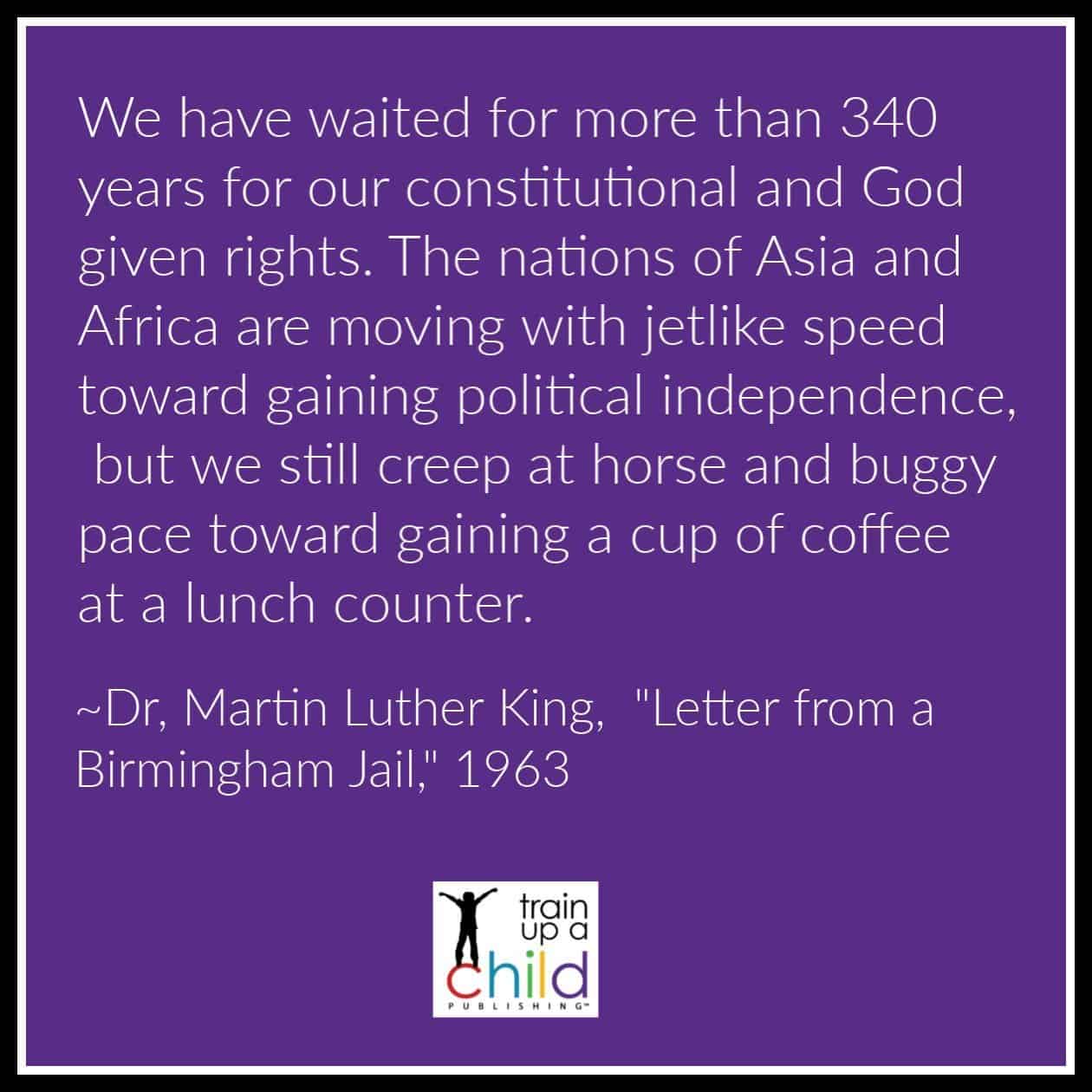







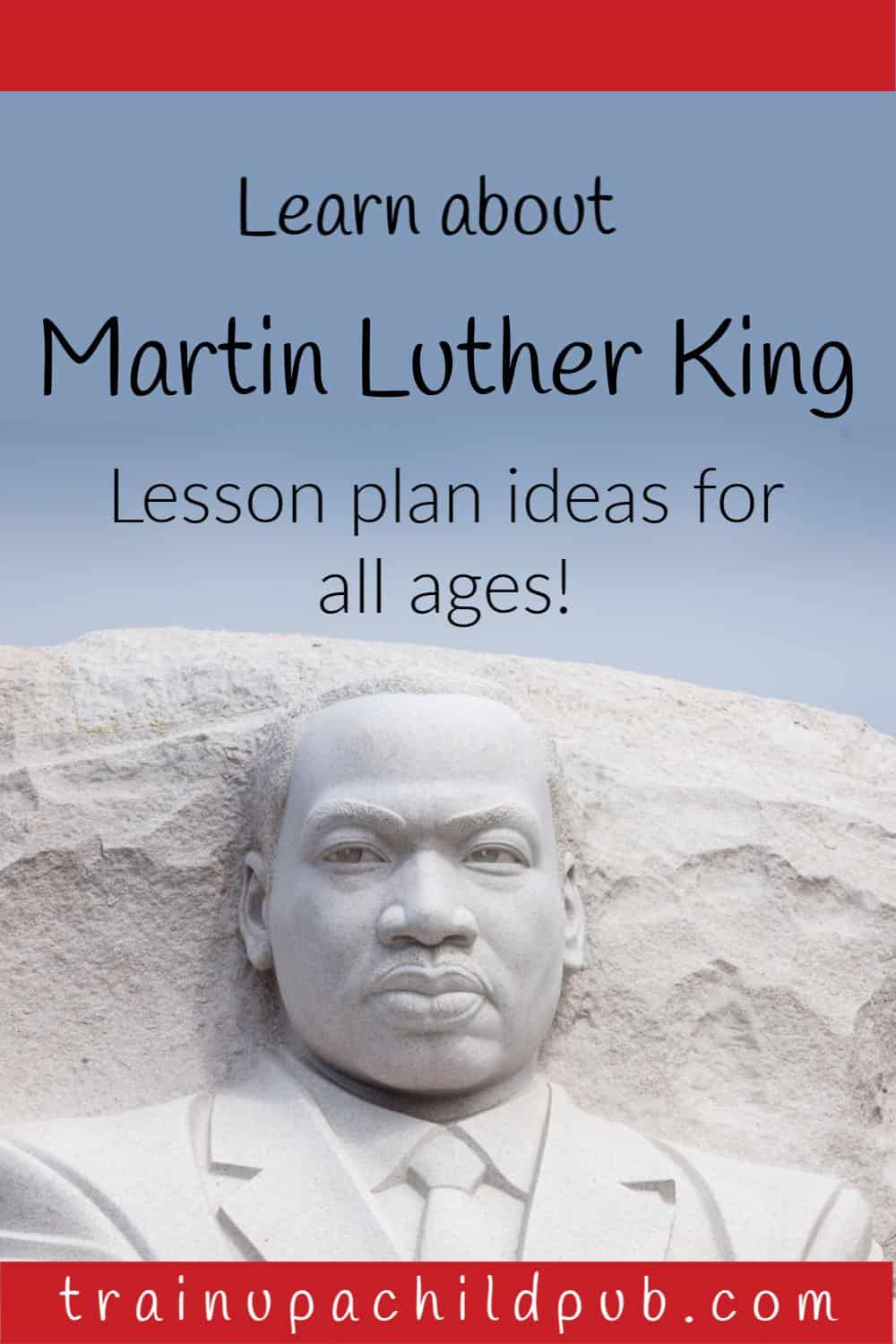
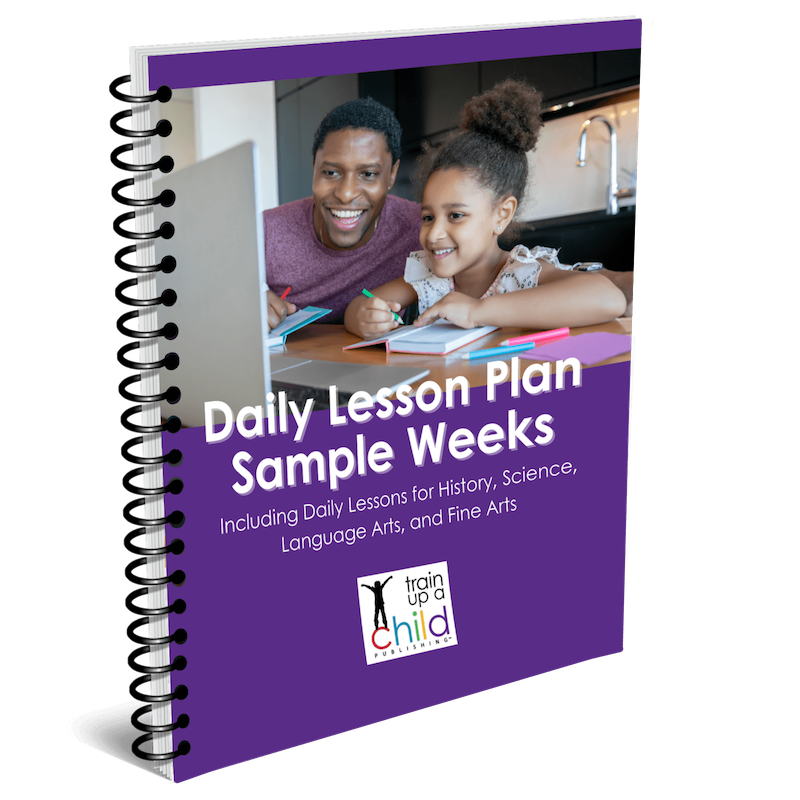
Hi Dana!
I appreciate the information and links to learn about and honor Martin Luther King, Jr. 🙂 Thanks again for your Train Up a Child materials.
Blessings in Christ!
M.C.
You’re quite welcome He played such an important part in American History! I am so glad you enjoyed the post and took the time to comment; thank you, M.C.